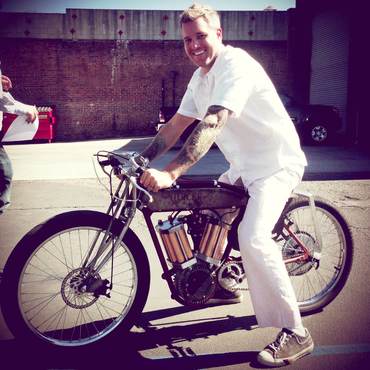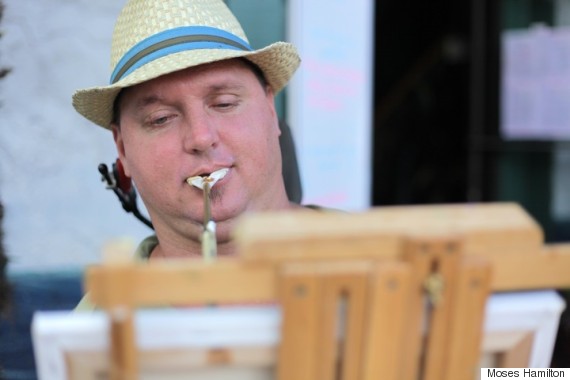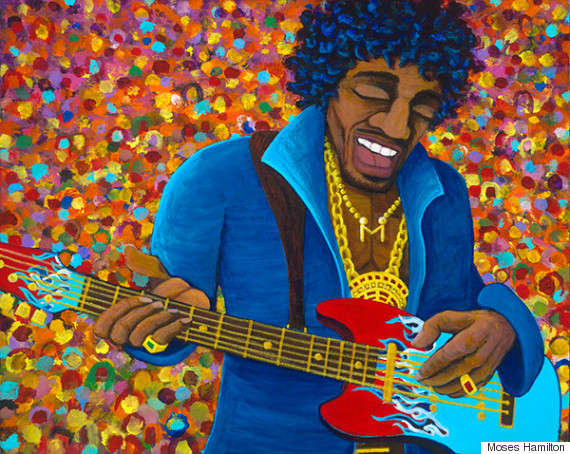21st Century: Successful Blend of Spiritual Professionalism in Leadership
The second blog in my leadership profile series.
Ian Gardner is a reluctant achiever; an introvert by nature, he's a builder creating extraordinarily successful, bold visions.

He comes across as a very corporate guy, who possesses a lot of clarity and insight -- people meet him and sense something different about his energy; they always ask, "How do you blend the spiritual and professional?" Many of these professionals -- doctors, lawyers and other leaders -- don't have a comfortable and fluent way to connect the inner and outer world.
Ian has successfully integrated a harmonious balance between his inner and outer life. It's counter to the perception of many who believe an individual must be on one end of the spectrum or the other. People, who get to know him, see him trade his suit to baring his fully-tattooed arms, sneakers, beads and jeans. He's the same guy no matter what environment he's in and has inspired many to find the courage to live authentically.
He realizes that being authentic is not about being perfect. Ian trusts in the unknown and helps leaders open that door.
Seeds of discontent.
Early on, Ian discovered he could pretty much apply himself to any career. He decided to become a doctor, only to find through an internship at Duke Energy that he was more suited to finance. He had taken an intuitive leap, accomplishing something he'd never done.
It was the beginning of learning to trust his intuition, which continued at every point in his career.
He was hired full time at Duke and then went onto Boston Consulting Group (BCG) to be a leading analyst. Even though the lifestyle afforded him a substantially luxurious existence, he found it was not enough to sustain his happiness.
Ian desired a fulfilling and enduring happiness. Through his work experiences, he felt there had to be more.
Discovering true happiness.
He applied to UCLA business school for his MBA, taking time out from his career, which also benefitted his growing self-discovery.
Yoga and meditation opened up a whole new world to him. He started uncovering who he truly was at heart, and it wasn't easy. The inner journey laid bare his insecurities, doubts, pain and frustrations. Ultimately he faced in himself, what many avoid; through it, he became stronger, more resilient and fearless.
His breakthroughs lead him to San Diego, then to the Esalen Institute in Big Sur, where he worked on their capital campaign, followed later by a visit to India.
Back in San Diego, Ian took a job managing a restaurant, while writing six books on meditation. He was spending 6-8 hours a day meditating and connecting to his inner depths; he was grasping the truth of how to create happiness within.

Ian took his inner realm as far as he could and wanted to get back to living in the external world.
Bringing the Inner World to Outer Endeavors.
Intuitively, whether he was ready or not, he followed a spark in choosing doors to open in his career.
Along the way, he had three failed startups, losing over one million dollars from money given to him by others. Intuitively, he had the right vision, but his applied experience hadn't yet caught up, leaving him to honestly evaluate where he had gone wrong. He came to understand that he hadn't mastered the physical aspects of building a business, which was more important than the creative, and intuitive parts.
Ian continued to trust his inner knowing, while relying on his analytical mind. As an entrepreneur, he helped his brother build a company to successfully become #1 in the marketplace for biotech recycling, which he sold at a substantial profit in 2008. His next venture was in wind turbine devices, taking the company public in 2010.
His journey was to remain fearless, to keep trying, continue learning, and never give up.
Through his many endeavors, Ian would find himself in various social, professional settings. The conversation would inevitably turn to questions about his inner world. His peers saw the difference in how he handled the stress related to work. He didn't complain; he seemed to have a peace that others were lacking, this calm made others gravitate toward him.
This led him to the Finding Silence Project. The inspiration was to act as a bridge between the spiritual and professional.
Finding Silence Project.
The great hermit lives in a town." -- Chinese proverb
Silence is explored in a variety of global spiritual communities, bringing to focus the need to create an inner world, which allows us to flourish in our lives as a whole -- both professionally and personally.
Ian believes this will create a bridge between those communities where silence is practiced as a norm, and the busy, overwhelmed inhabitant of our 24/7 society.
Every year Ian takes a month off from work and travels with a film crew to a different part of the world to retreat with the monks of a different tradition.
Authentic leadership born from silence.
Ian has been a successful entrepreneur and investment banker; he currently helps run LA Cleantech incubator.
Ian sees a really successful leader, as possessing intuition and creativity to do something, which hasn't been done before. He believes this comes from the wellspring of creativity, the inner silence.
His favorite time of day is 4:30 a.m.
He rises and meditates until the sun comes up.
It's his best time.
If he has a business or a personnel problem, during the silence, he finds the solution. It helps him to deal with fear, stress, anger, and other strong emotions. He connects this as to why people work for him. They trust the beauty inside his vision, which comes from the silence, the inner reflection and the solitude.
Change as part of one's own evolution.
Ian is notoriously uncomfortable with stagnation and thrives on change.
There must be a new mountain to scale or he gets twitchy, so he lives by this platitude:
"At any point in my life, when I go back twelve or even 24 months from where I am today, if someone had told me that I'd be doing this now and I believed them, then I'm not living my life well enough. I'm not taking enough risks, not pushing things."
Everything he's done has been a risk; fear has never held him back. He does little quantitative research; he doesn't take the linear path. To him happiness is about eliminating fear from life, because fear inhibits freedom.
The whole essence of the inner journey pushes him to evolve, to expand his consciousness and awareness to go further down the path to new territory. Learning to integrate the balance of the inner to outer world.
His advice:
Ask yourself, "Do you want to get the most out of life based on who you are and what you are here to do? Then do what your heart tells you to do, follow your inspiration, it'll work out, it may not be easy initially, but it'll work out."
It is the most important thing.

















